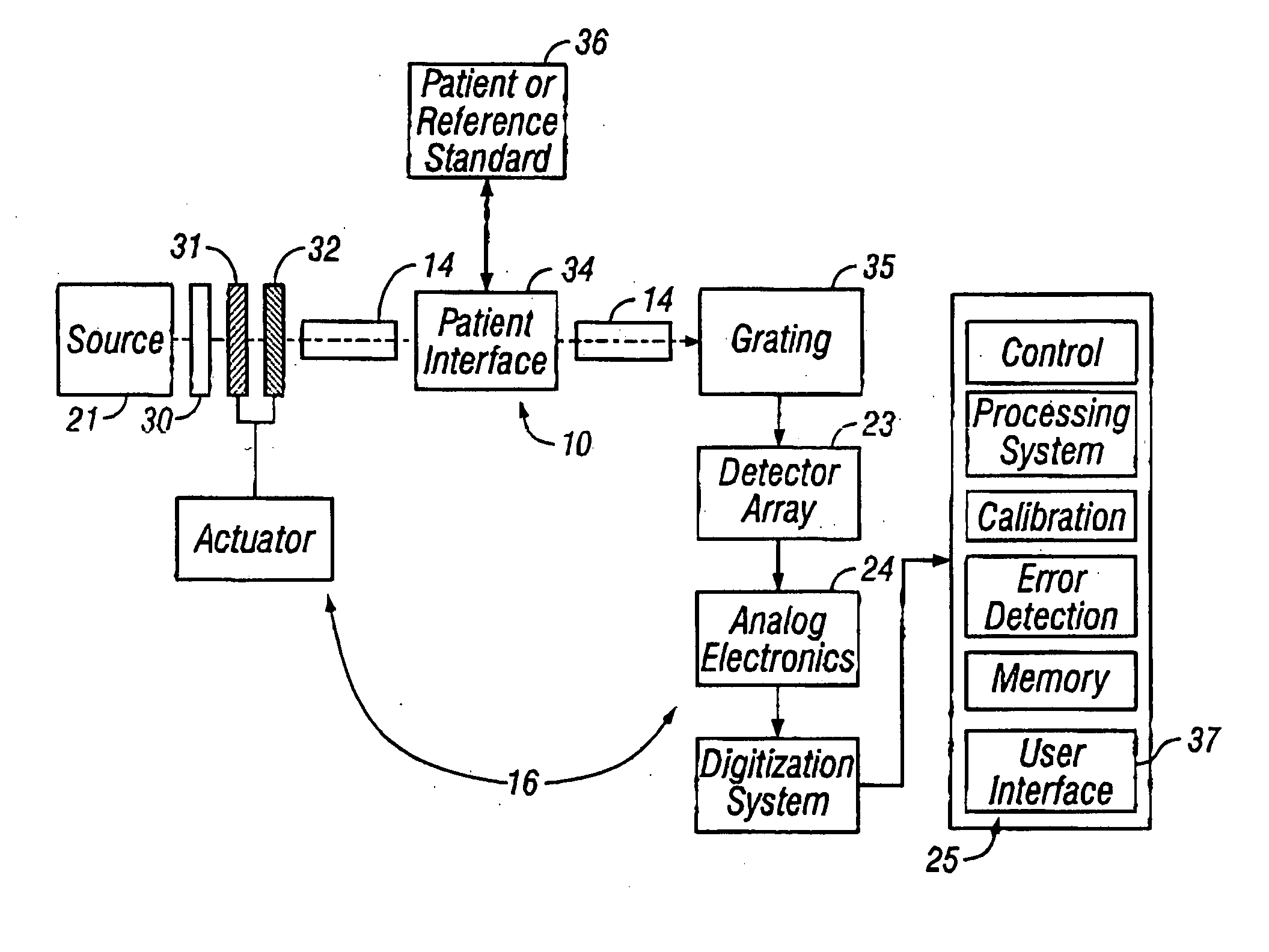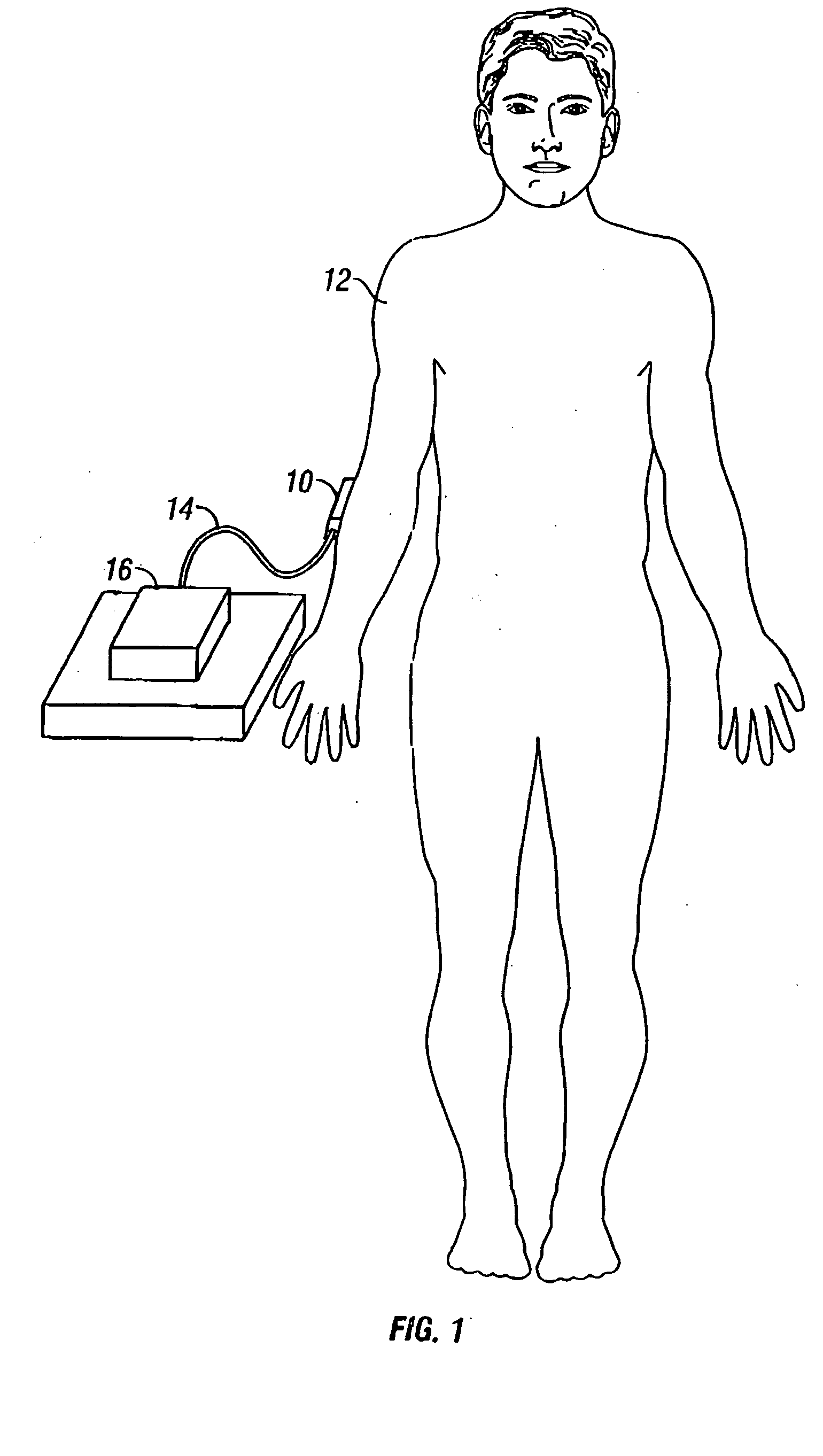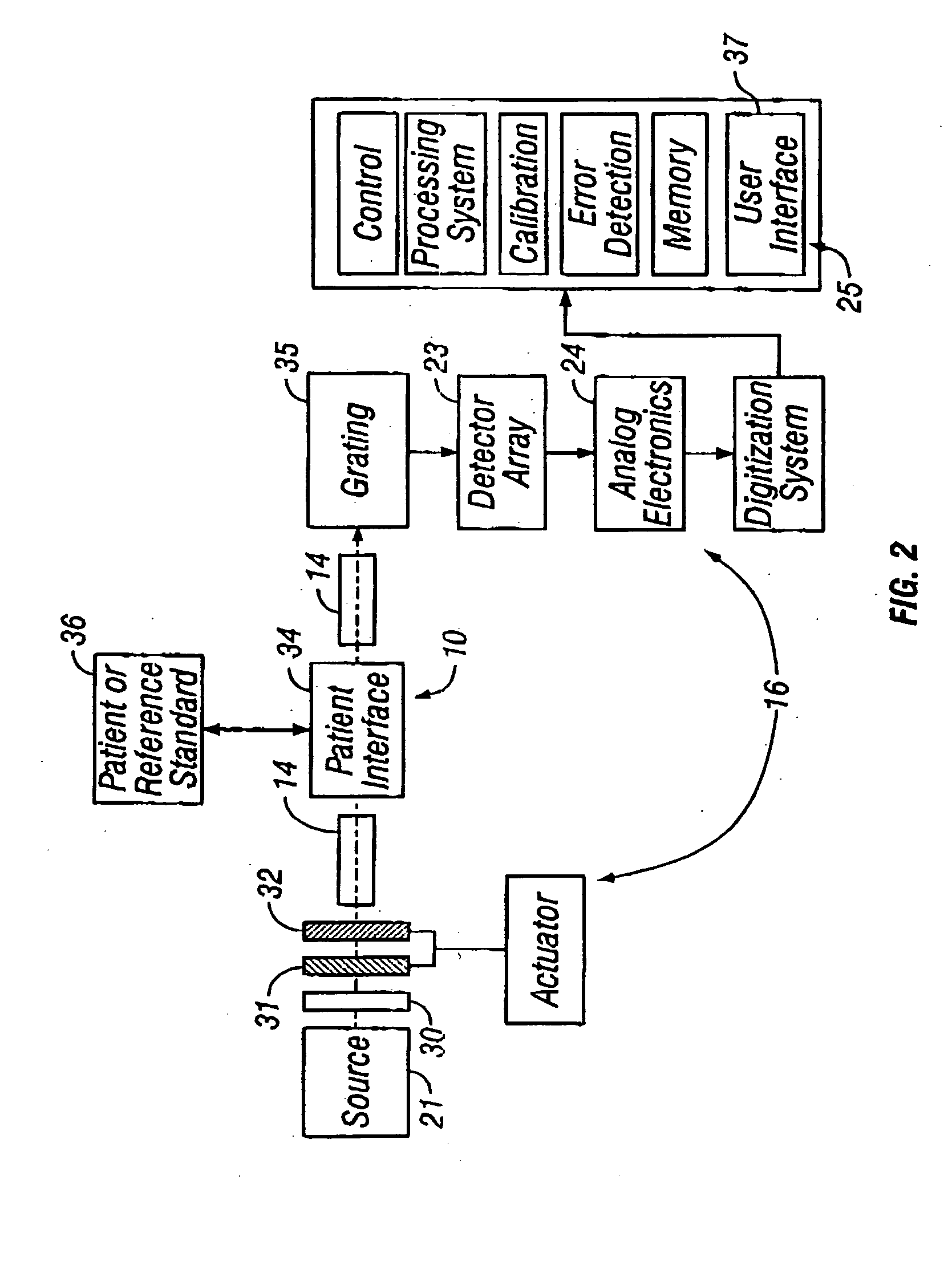Compact apparatus for noninvasive measurement of glucose through near-infrared spectroscopy
a near-infrared spectroscopy and compact technology, applied in the field of fiber optics for the illumination of analyte samples, can solve the problems of poor selectivity, prior art devices have not been able to compensate for variations in skin thickness at the tissue measurement site, and prior art devices have not provided satisfactory compensation, so as to minimize the interference of the adipose layer and minimize the sampling of the adipose subcutaneous layer , the effect of maximizing ligh
- Summary
- Abstract
- Description
- Claims
- Application Information
AI Technical Summary
Benefits of technology
Problems solved by technology
Method used
Image
Examples
Embodiment Construction
[0027] The presently preferred embodiment of the invention uses a sampling module coupled to a base module. The sampling module includes an illumination system based upon an incandescent lamp. The base module includes a grating and detector array. The base module may be connected to the sampling module through a communication bundle. In this document, the combined sampling module, communication bundle, base module, and associated electronics and software is referred to as a spectrometer and / or glucose analyzer. In FIG. 1, the sampling module 10 is semi-permanently attached to the forearm of a subject 12, a communication bundle 14 carries optical and / or electrical signal to and / or from a base module 16 located on a table, and the communication bundle carries power to the sampling module from the base module.
[0028] A block diagram of the noninvasive glucose analyzer is provided in FIG. 2. Essential elements of the glucose analyzer are the source 21, guiding optics 14 before and / or af...
PUM
 Login to View More
Login to View More Abstract
Description
Claims
Application Information
 Login to View More
Login to View More - R&D
- Intellectual Property
- Life Sciences
- Materials
- Tech Scout
- Unparalleled Data Quality
- Higher Quality Content
- 60% Fewer Hallucinations
Browse by: Latest US Patents, China's latest patents, Technical Efficacy Thesaurus, Application Domain, Technology Topic, Popular Technical Reports.
© 2025 PatSnap. All rights reserved.Legal|Privacy policy|Modern Slavery Act Transparency Statement|Sitemap|About US| Contact US: help@patsnap.com



